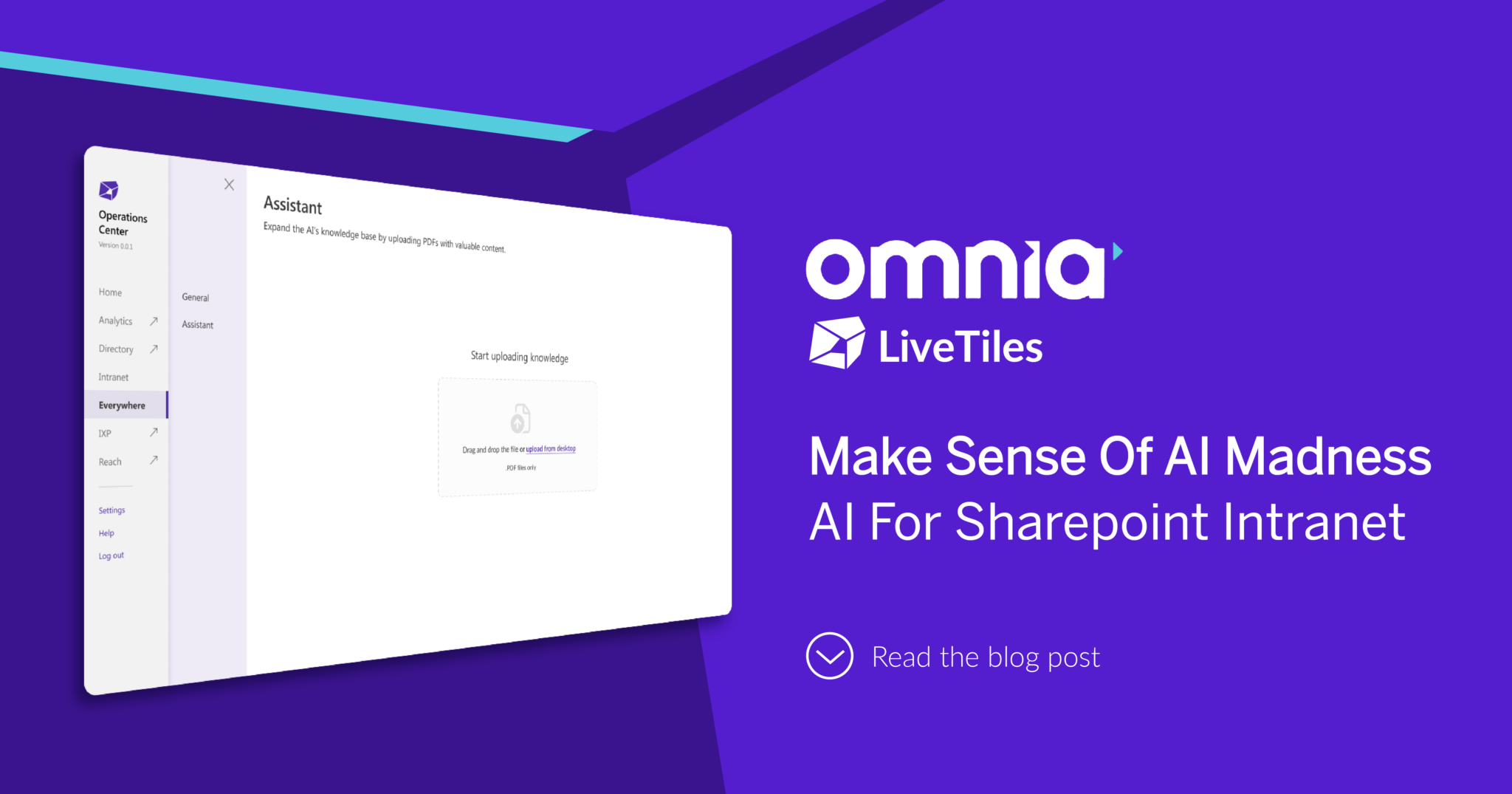Intranets are no longer stagnant, boring – and let’s face it – dumping grounds for HR policies. Creating an intranet that is optimised for employees, is an integral mechanism for teams to work together, communicate, access information, and increase mobile accessibility.
You need a great one. But setting up an intranet requires planning, design, building, maintenance, and iteration (especially if you want your workforce to truly find it useful in their day-to-day lives). Your ideal intranet should be designed to enhance work flows through easy, fast, and convenient connection to rich information, intuitive processes, and people.
Three major functions to consider when building an intranet
Collaboration and Networking
Corporations are full of information “silos”. Onsite and remote team members are sitting on mountains of valuable business information that they can’t easily share. Creating an intranet that is optimised for employees helps break down these silos so that employees can easily discover new information – and each other.
As more and more people engage with the intranet and find value through things like discussion groups, messaging channels, or bulletin boards, the more valuable (all well-trafficked) the network becomes.
Mobile Workforces
The trend is unmistakable. More and more people are working remotely. Nearly half of the population works offsite — at least part of the time — and half of all workers will be freelance within the next decade. The modern intranet must be built for mobility. No matter where an employee (or contractor) is, they must be able to access all core business applications, communications, meetings, and even social media. No emailing files to yourself or using personal apps to conduct business, no scrambling for access to corporate documents. The digital workplace of today, means you can be at work literally, from anywhere with a network connection.
Obtain Workflow Analytics
Business needs are always changing. Your intranet will have to be flexible. Having a data window into intranet usage and productivity is critical. You should be able to see how all programs, tools, apps, messaging, and video conferencing systems are being used on the network. Analytics will provide instant, real-time usage of people, departments, geolocations, device types, and page interactions. Great intranets gather data which helps determine where the network is enhancing workflow or where the current design needs revision.
Key Intranet Design Characteristics: Modular, Easy to access, SECURE
Whether you are looking to build a complex intranet or a simple one, your company’s needs will vary over time. Implementing an intranet solution that is modular and easy to customize will enable your organization to respond to the content, collaboration, and communication needs of your organization. You always want to be able to easily expand or modify features, tools, and programs.
The 7 Critical Steps to Building an intranet
There are seven key steps to creating your intranet: Planning, identifying content, choosing the provider, building, training, and eventually, revising. Let’s start at the beginning… developing the plan.
(1) The Plan (and the People Behind it)
Developing your intranet should never be rushed. It’s really important to gather a project team – with representatives from different departments — to construct a comprehensive plan. The plan should include:
- The specific purpose, business goals, and objectives of the intranet.
- Who will use it internally/on premises vs. mobile?
- Who is contributing (ongoing) content to it?
- What are the functions, workflows, and special needs of the workforce?
- What is the total budget for development, training, security, and oversight.
Then, you should develop a preliminary site map which shows information architecture and possibly, integrated systems. Also, a key element of your plan should address oversight, maintenance, and governance issues, such as who will be moderating social networks and user forums.
(2) Identify Your Content
With your site map built, you can begin to identify existing content inventories and further structural needs. HR-specific content like company policies and personnel-benefits-materials, is where companies often commence. But there are many other options such as training videos, company news, frequently asked questions, and calendars.
Build use case scenarios to envision how employees will interact with content. You must ensure the path is as simple and intuitive as possible. Get input – lots of it – from the project team to help model these scenarios accurately.
(3) Choose your intranet provider
Take into consideration the size and needs of your company when choosing your intranet provider. Consider whether it will be custom-built or off-the-shelf? Will it be hosted on-premises or by a cloud provider? Usually, it will be one of these three combinations:
- Custom built and hosted on-premises
- Built from off-the-shelf components, hosted on the premises
- Cloud provider, hosted remotely
Cloud-based intranet solutions are usually pretty easy to deploy and maintain, but much depends on the security needs of your organization.
Either way, you should choose a provider who can scale with your business and demonstrate a history of iron-clad defense against any breach of network security.
(4) Build, Test, Go Live!
After you have chosen your provider you will expand on your preliminary site map to specifically define where people, content, and conversations will be grouped and structured.
You will populate your site with content and test, test, test. You should have a core group of beta-testers (not necessarily the core project team) work through the (previously defined) use case scenarios, testing out the various tools, programs, applications and integrations.
Use a specialist bug tracking application such as Bugherd, for logging, triaging and validating bugs as resolved, re-tested and having passed QA.
After thorough stress-testing, you can begin to customize your intranet further with branding. You will then add all users, create accounts, and go live!
Once people start engaging with the platform in their daily work, you will see the advantage of having a flexible, adaptable, intranet. Be warned… there will be more fine tuning (everyone’s a critic!) but hopefully, only small adjustments will be required.
(5) The secret to success is excellent training
Everyone’s busy. Everyone is used to the old way of doing things. They might resist messaging people in a new way (when trusty old email is what they are used to).
They might not be using video conferencing or social medial tools right away. Your best bet is to create something of an “advertising” campaign to show off the new functions. Some common ways to train employees on an intranet are:
- Webinars
- Videos
- Podcasts
- Gamification
(6) Maintenance and Oversight
Your project team built a maintenance and oversight plan, now it’s time to ensure the intranet is not only easy to use and functioning well but accurate. For example, is the system for file management well-organized? Are there plenty of self-serve features built-in, like LiveTiles’ AI-driven employee directory software? Tools like this make oversight an easier job because it lets employees have more ownership over site content. This software automatically ‘stars a conversation’ with them to ensure their profile information is always up-to-date.
But your intranet will not entirely run itself. You will need to ensure content, programs, and tools are functioning well and should always address any site problems instantly.
(7) Perform Analytics and Continue to Revise
A critical feature to consider when setting up your ideal intranet, is analytics. After launch, you should continue to monitor the performance of the platform, and assess whether usage in inline with your initial goals. What features are popular? Who is using the intranet most? LiveTiles Intelligence for example, allows administrators to mine broad and granular data. You can examine usage by departments, geolocations, device types and page interactions. Or, you can see a birds-eye view of site activity.
Over a period of time, if certain apps, programs, or tools are not gaining traction, adjustments should be made accordingly.
Ready to build your Sharepoint intranet? Request a demo today.








